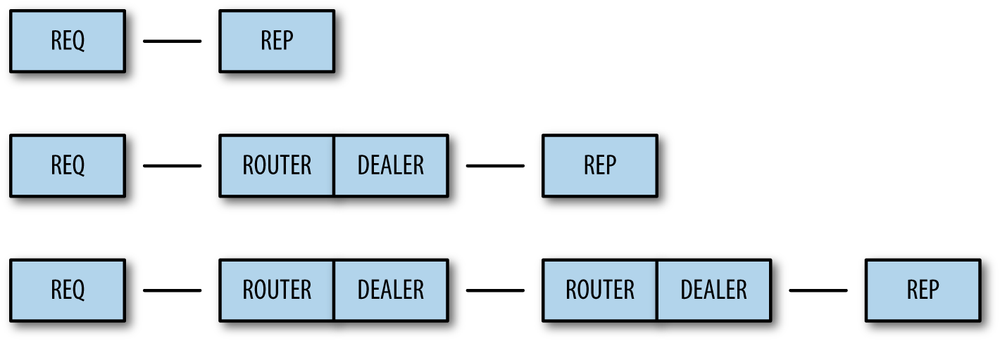The Extended Reply Envelope
Now letâs extend the REQ-REP pair with a ROUTER-DEALER proxy in the middle and see how this affects the reply envelope. This is the extended request-reply pattern we already saw in Chapter 2. We can, in fact, insert any number of proxy steps (Figure 3-2). The mechanics are the same.

Figure 3-2. Extended request-reply pattern
The proxy does this, in pseudo-code:
prepare context, frontend and backend sockets
while true:
poll on both sockets
if frontend had input:
read all frames from frontend
send to backend
if backend had input:
read all frames from backend
send to frontendThe ROUTER socket, unlike other sockets, tracks every connection it has, and tells the caller about these. The way it tells the caller is by sticking the connection identity in front of each message received. An identity, sometimes called an address, is just a binary string with no meaning except âthis is a unique handle to the connection.â Then, when you send a message via a ROUTER socket, you first send an identity frame.
The zmq_socket() man page
describes it thusly:
When receiving messages, a ZMQ_ROUTER socket shall prepend a message part containing the identity of the originating peer to the message before passing it to the application. Messages received are fair-queued from among all connected peers. When sending messages a ZMQ_ROUTER socket shall remove the first part of the ...
Get ZeroMQ now with the O’Reilly learning platform.
O’Reilly members experience books, live events, courses curated by job role, and more from O’Reilly and nearly 200 top publishers.

